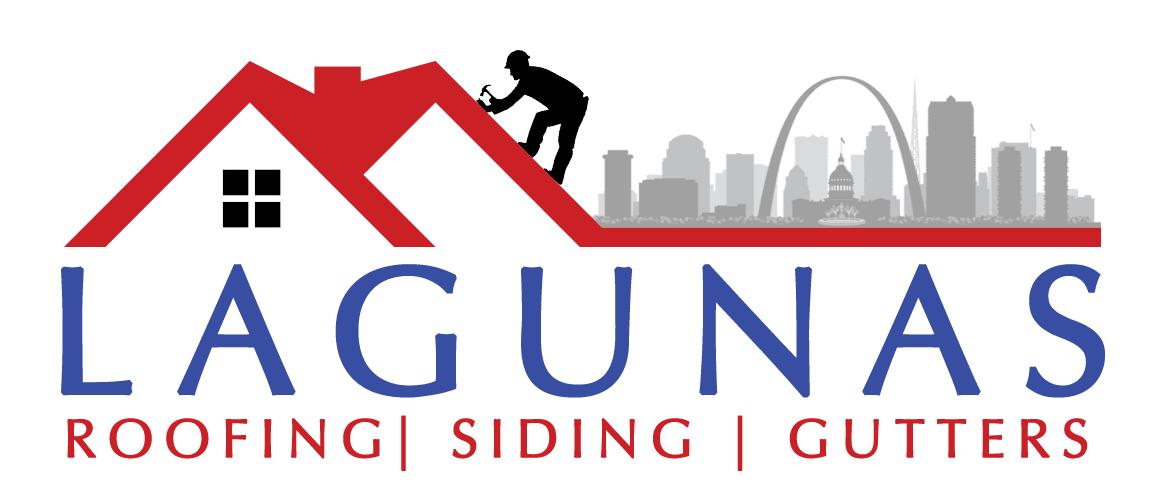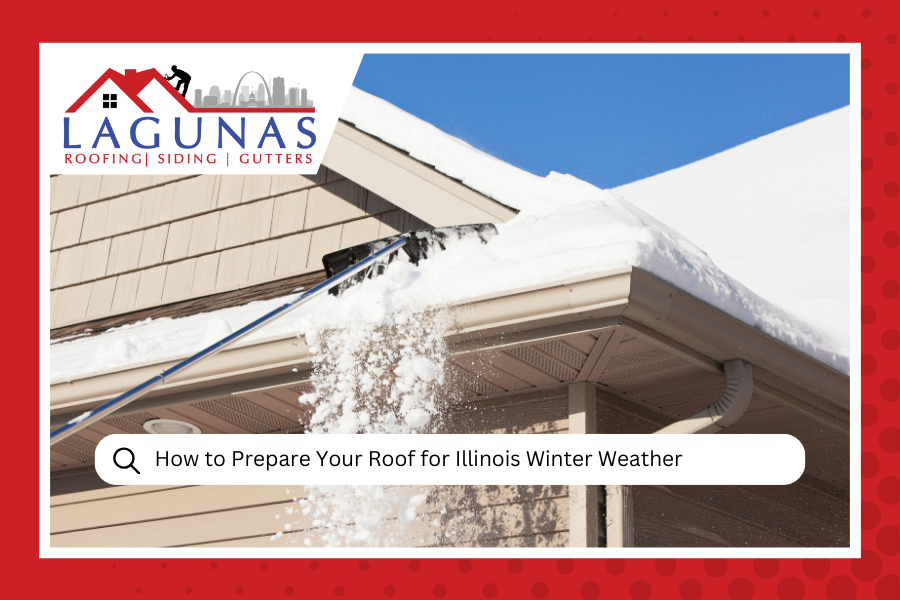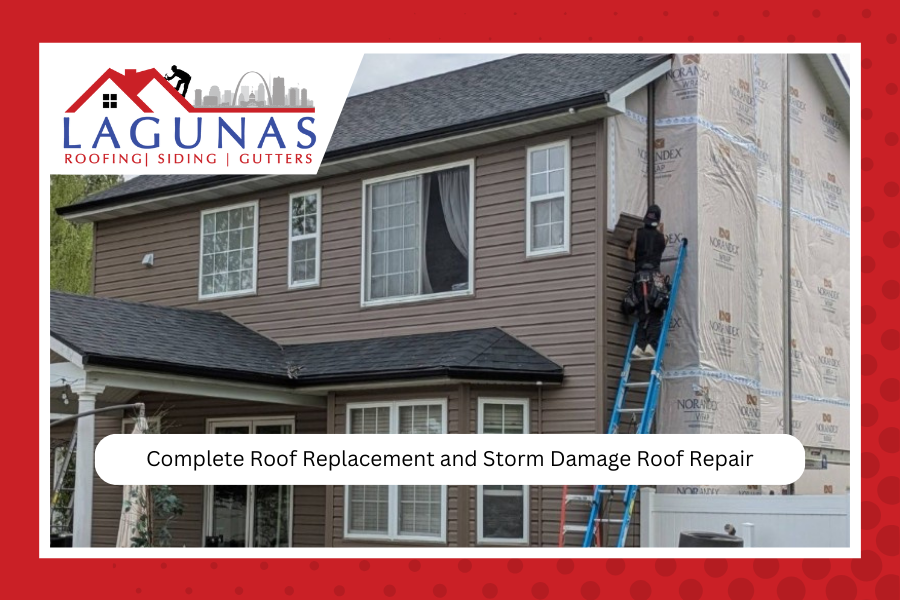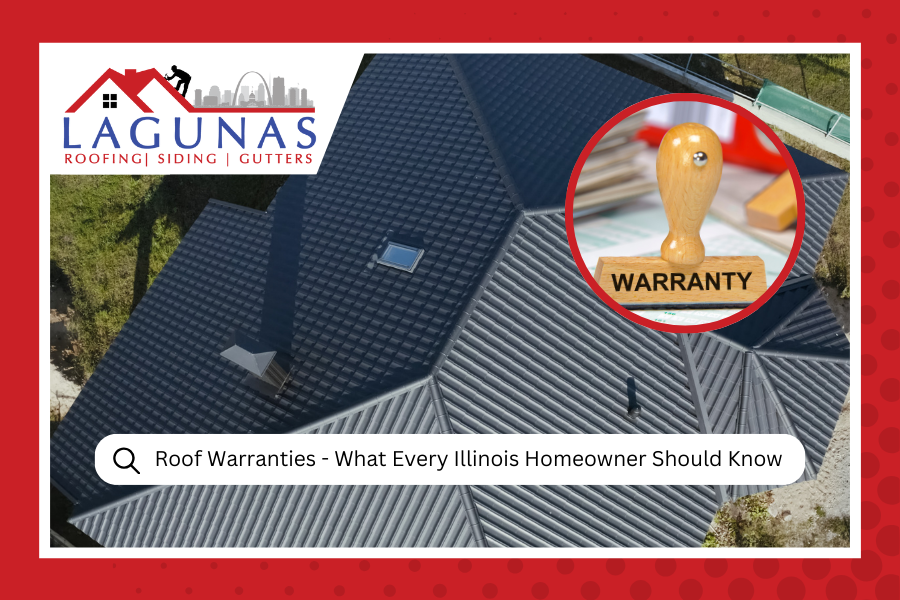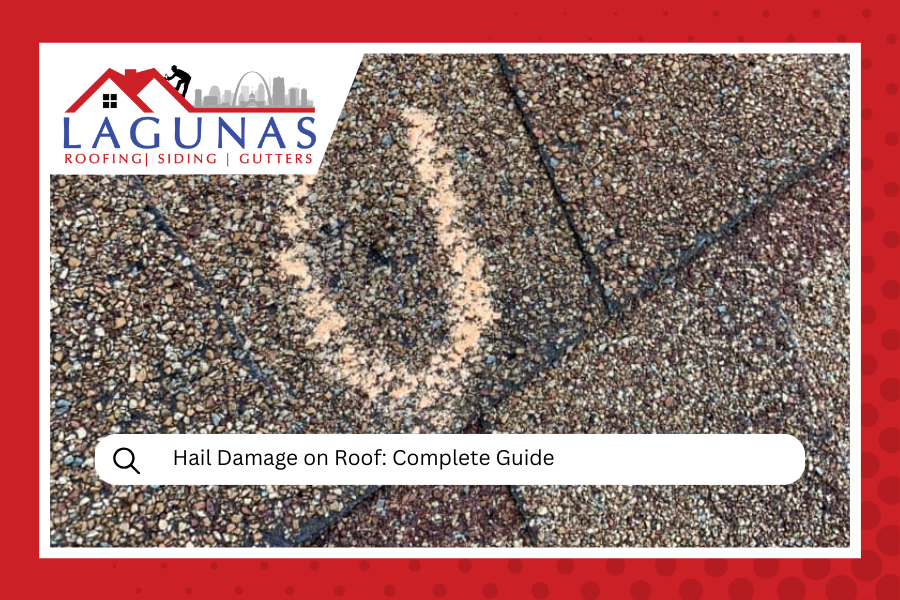
Hail Damage on Roof: Complete Guide to Detection, Insurance Claims, and Repairs
Illinois weather can be pretty unpredictable, and if you've lived in the St. Louis metro area for any length of time, you know that hail storms can pop up faster than you can say "take cover." One minute you're enjoying a peaceful evening, and the next minute it sounds like someone's throwing golf balls at your house. We at Lagunas Roofing have seen our fair share of hail damage over the years, and trust us when we say that what looks fine from the ground might tell a completely different story up close. Our roof inspection services help homeowners discover damage they never knew existed.
The tricky thing about hail damage is that it's not always obvious. Sure, if you've got tennis ball-sized hail, you'll probably notice some issues pretty quickly. But those smaller stones, the ones that seem harmless enough? They can cause serious problems that won't show up until months later when you've got water dripping into your living room.
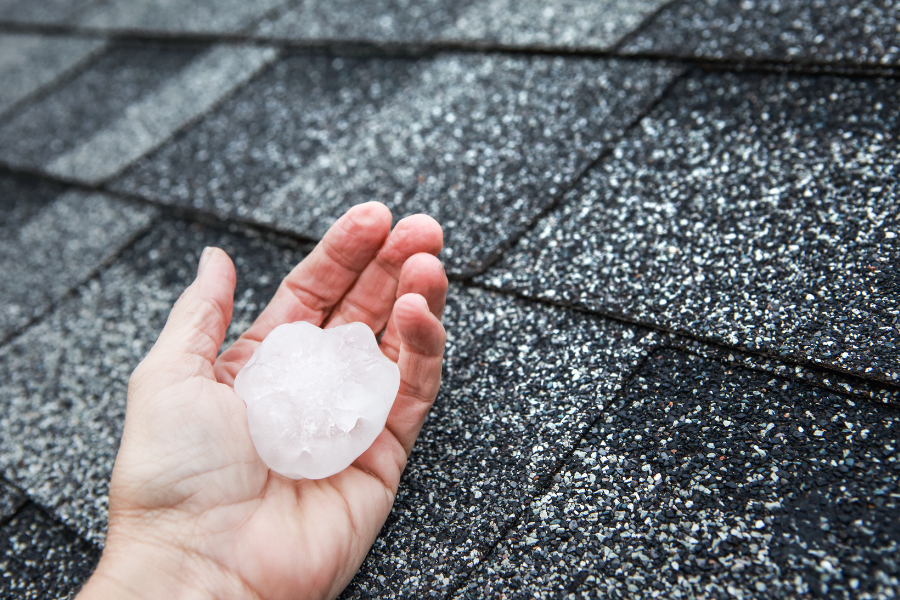
How to Identify Hail Damage on Your Roof
Visual Signs from the Ground
Before you even think about climbing up there (please don't), there are several things you can spot from ground level that might indicate hail damage:
Granule Loss on Asphalt Shingles
Fresh granule loss will show up as dark or light spots where the protective granules have been knocked off. You might also notice an unusual amount of granules in your gutters after a storm.
Dented Metal Components
Check your gutters, downspouts, vents, and any metal flashing. Hail loves to leave its calling card on metal surfaces, and these dents are often easier to spot than shingle damage.
Damaged Siding or Windows
If your siding has dings or your windows show impact marks, there's a good chance your roof took a beating too.
Professional Assessment Signs
Here's where things get interesting. Our technical specialist has found damage that homeowners had no idea existed. We're talking about:
- Exposed Mat: When granules are knocked off and the underlying asphalt mat becomes visible
- Fractured Shingles: Cracks that aren't immediately visible but compromise the shingle's integrity
- Loose or Missing Shingles: Sometimes the damage doesn't show up until wind or weather tests those weakened areas
Need someone to take a closer look? Getting professional help early can save you thousands down the road.
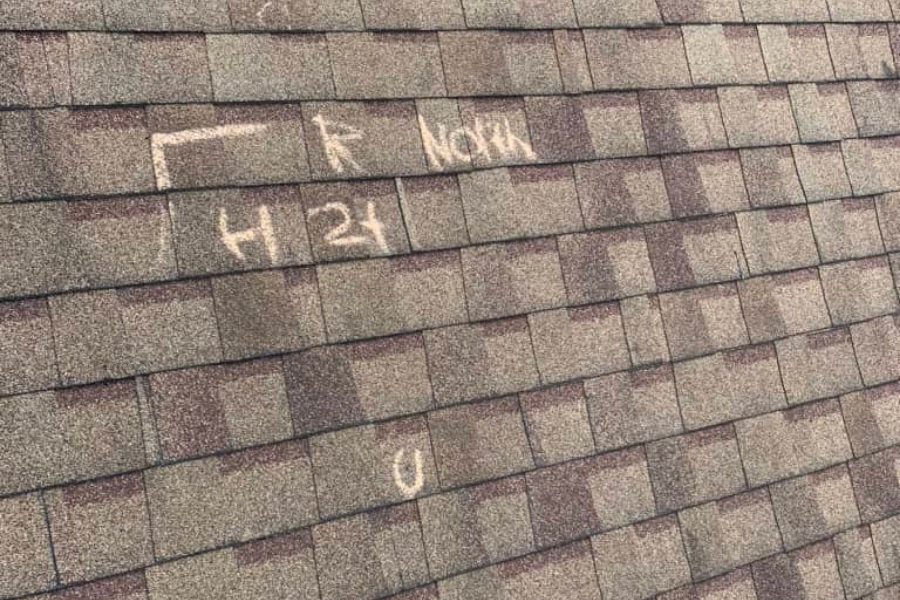
When Hail Damage Becomes a Real Problem
Here's something most people don't realize: hail damage isn't just cosmetic. Those seemingly minor dings and granule losses can lead to serious issues if left untreated.
Water Infiltration
Once your shingles lose their protective granules, UV rays start breaking down the underlying materials. This creates weak spots where water can eventually penetrate.
Accelerated Aging
A roof that might have lasted 20 years can suddenly need replacement in 10 if hail damage isn't addressed properly.
Secondary Damage
What starts as roof damage can quickly become interior damage, structural issues, and mold problems. Nobody wants to deal with that headache.
Storm Damage Your Roof?
Don't wait for small problems to become big ones. Our technical specialist can assess your roof and work with your insurance company.
Get Free Roof InspectionUnderstanding Your Insurance Coverage for Hail Damage
This is where things get really important, and frankly, where a lot of homeowners get confused or frustrated. Insurance companies have specific requirements and timelines for hail damage claims.
Time-Sensitive Nature of Claims
Most insurance policies require you to report damage within a reasonable timeframe after the storm. Waiting too long can seriously hurt your chances of getting coverage.
Documentation is Everything
Insurance adjusters need proper documentation to process your claim. This includes:
- Photos of the damage
- Professional inspection reports
- Evidence of the storm (weather reports, news coverage)
- Receipts for any emergency repairs
Working with Insurance Adjusters
Here's where our experience with insurance claims really comes in handy. We've worked with dozens of insurance companies through our roof repair services and know exactly what they're looking for.
| Damage Type | What to Look For | Insurance Impact | Urgency Level |
|---|---|---|---|
| Granule Loss | Dark spots, granules in gutters | Often covered if widespread | Medium |
| Cracked Shingles | Visible cracks, exposed underlayment | Usually covered | High |
| Missing Shingles | Bare spots, loose shingles | Always covered | Immediate |
| Metal Dents | Dented gutters, flashing, vents | Covered if functional impact | Medium |
Professional vs. DIY Hail Damage Assessment
We get it. The first instinct after a storm is to grab a ladder and check things out yourself. But here's the thing: hail damage assessment is trickier than it looks, and safety should always come first.
Why Professional Assessment Matters:
- Safety: Roofs can be dangerous, especially after storm damage
- Experience: Our team knows exactly what to look for and where to find it
- Insurance Requirements: Many insurance companies prefer or require professional inspections
- Hidden Damage: We often find damage that isn't visible from the ground or to untrained eyes
Plus, if you're dealing with an insurance claim, having a professional assessment from the get-go can strengthen your case significantly.
Hail Damage Repair Options
Once you've confirmed hail damage, you've got a few options depending on the extent of the damage:
Minor Repairs
For isolated damage, targeted repairs might be sufficient. This could include replacing damaged shingles or fixing minor granule loss.
Partial Replacement
Sometimes one section of the roof takes more of a beating than others. In these cases, partial replacement might be the most cost-effective solution.
Complete Roof Replacement
When damage is extensive across the entire roof surface, replacement becomes necessary. The good news? Insurance often covers this completely when hail damage is properly documented.
Our team at Lagunas Roofing handles everything from minor roof repair to complete roof replacement , and we work directly with your insurance company to make the process as smooth as possible.
Preventing Future Hail Damage
While you can't control Illinois weather (trust us, we've tried), there are some steps you can take to minimize future hail damage:
- Consider impact-resistant shingles during replacement
- Schedule regular roof inspections and maintenance
- Keep gutters clean and properly secured
- Trim overhanging tree branches
- Address minor issues before they become major problems
- Document your roof's condition before storm season
Impact-Resistant Shingles
Modern asphalt shingles
are designed to better withstand hail impact than older versions. If you're replacing your roof, consider upgrading to Class 4 impact-resistant shingles.
Regular Maintenance
A well-maintained roof handles storm damage better than one that's already compromised. Regular inspections and maintenance can help your roof weather the next storm.
Quick Response
The faster you address hail damage, the less likely it is to become a bigger problem.
Common Hail Damage Mistakes to Avoid
Over the years, we've seen homeowners make some pretty costly mistakes when dealing with hail damage:
Waiting Too Long
Time is not on your side with hail damage. The longer you wait, the more likely minor damage becomes major damage.
Accepting the First Insurance Estimate
Insurance companies sometimes lowball initial estimates. Having a professional contractor review the assessment can ensure you get fair coverage.
Choosing the Wrong Contractor
Storm chasers love to target areas hit by hail. Make sure you're working with a local, licensed contractor with a solid reputation.
Working with Local Professionals
Here in the Fairview Heights area and throughout the St. Louis metro region, we've built relationships with homeowners, insurance companies, and local suppliers. We understand the specific challenges that Illinois weather presents, and we're not going anywhere after your project is complete.
Our vetted sales team and technical specialist work together to ensure you get honest assessments and quality repairs. No high-pressure tactics, no inflated estimates, just straightforward help when you need it most.
For more insights on maintaining your roof, check out our guide on common roofing issues homeowners have and learn about what causes roof damage.
Frequently Asked Questions
How soon after a hail storm should I have my roof inspected?
You should have your roof inspected as soon as it's safe to do so, ideally within a few days of the storm. This helps with insurance claim timelines and prevents minor damage from becoming major problems.
Can small hail stones really damage my roof?
Absolutely. Even hail smaller than a quarter can cause significant granule loss and compromise your shingles' protective capabilities, especially if the hail is driven by high winds.
Will my insurance cover hail damage repairs?
Most homeowner's insurance policies cover hail damage, but coverage depends on your specific policy terms, deductible, and how quickly you report the damage. Professional documentation helps ensure proper coverage.
How can I tell if my roof has hail damage if I can't see it from the ground?
Professional roof inspections are the best way to identify hail damage. Our technical specialists use specialized equipment and expertise to find damage that isn't visible from ground level, including granule loss, mat exposure, and structural compromises.
